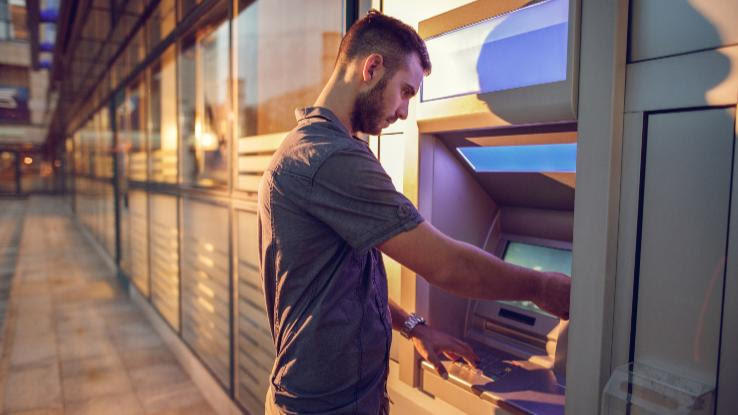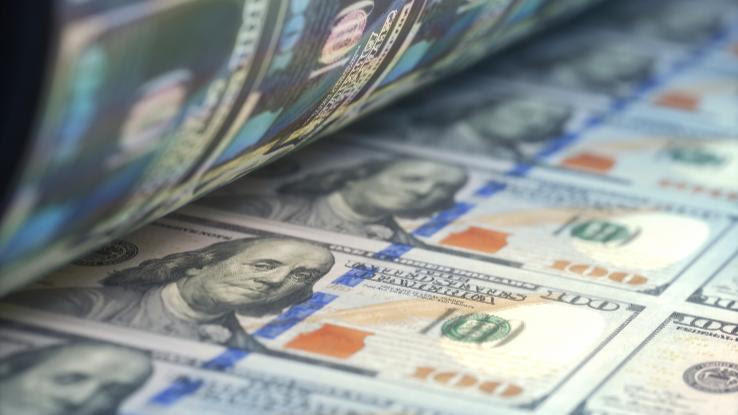
The term “inflation” has been all over the news lately — and it won’t be the last time we hear it either. Even though it’s a fairly common term, what, exactly, does “inflation” mean? And how does it relate to interest rates?
Here, we’ll break down the meaning of both terms and explain the ways they tend to go hand in hand. For those who want a quick primer on economics, we’ll also cover the causes and effects of inflation when it comes to the economy at large.
How Does Inflation Affect Interest Rates
For those who aren’t finance-savvy, macroeconomics is the study of how the economy behaves. Inflation and interest rates are kind of like the peanut butter and jelly of macroeconomics, so to speak.

While inflation and interest rates are not the same things, they do tend to be linked together. Before we delve into how one influences the other — and vice versa — let’s break down both terms.
What Is Inflation?
To put it simply, inflation refers to the tendency of the purchasing power of money to decrease over time. As the prices of goods and services rise, the same amount of money won’t be able to buy as much as it used to once upon a time.

For instance, say you had 34 cents back in 1920. According to census records from the Library of Congress, that’d be enough to buy you half a gallon of milk. Now, cut to 2015, and that same 34 cents has seen its purchasing power decrease dramatically over time, even though it’s technically the same amount of money. Need evidence? That same half a gallon of milk costs $3.50.
How Does Inflation Work?
So, why don’t prices just stay put? Well, inflation happens for a number of reasons, including the following:
- Economic Growth: When times are good and people have more money to spend, companies can get away with raising their prices, because, more likely than not, people will pay those prices.
- Supply and Demand: When a certain product becomes super popular, more people will want to purchase it, so the company that produces it can charge more, knowing that there are plenty of people who will still buy the product.

- Government Regulations: Certain laws or tariffs can make it more expensive for companies to either produce goods themselves or import them from other countries. In order to keep their rising costs from affecting their profits, they pass the costs on to their customers in the form of higher prices.
- National Debt: When the national debt goes up, the government has to find a way to keep making payments. The first option? Raise corporate taxes on large companies, which, in turn, will often shift the cost burden to their customers. Their second option is to print more money, which can often lead to higher prices on goods simply because there’s more money to be spent. Both can lead to inflation.
- Exchange Rates: When the dollar becomes less in relation to the value of money in other countries, imported goods are more expensive for retailers to buy, so they often raise the prices, again ensuring that the cost is transferred to customers.
Is Inflation Bad?
Whether inflation is a good or bad thing depends on how quickly it happens — and which side of it you’re on. Let’s break this idea down by looking at a few of the pros and cons of inflation.
Pros of Inflation
- Raises the price of assets over time. This applies to everything from stocks to property values, so it’s good for certain kinds of investors.
- The idea of inflation is a huge motivator when it comes to investing in stocks. The idea here is that the value of the stocks will rise along with inflation more than they would if they were put into a savings account.
- It may encourage spending due to the idea that it’s ultimately cheaper to buy now rather than later. In some instances, this can boost the economy.

Cons of Inflation
- Because it raises the price of assets over time, buyers will end up paying more for anything from stocks to property.
- Inflation can be a bad thing for investors whose major holdings are in cash or bonds, as it slowly eats away at the value of their holdings.
- If inflation happens too quickly, it can have a negative effect on the economy by reducing the amount of money people are able to spend. This, in turn, can have a negative effect on sales.
What Are Interest Rates?
Interest rates refer to how much a lender charges to borrow their money. The average interest rate is a percentage of the total amount of money loaned out over the course of a year and is often referred to as the annual percentage rate (APR).
For a simple illustration, let’s say you wanted to borrow $100 from your bank for a year at an interest rate of 10%. That would mean that you’d need to repay the initial $100 plus the interest rate of 10% — or $10.

Interest rates can also work the opposite way around when, rather than borrowing money, you put the money you already have into a savings account. Say, for instance, that instead of borrowing $100 from your bank, you put $100 into a savings account with a .60% APR. (Unfortunately, at the moment, the yield on most savings accounts tends to be incredibly low). At the end of the year, you’d have the initial $100 plus 60 cents you earned in interest, for a total of $100.60.
The Relationship Between Inflation and Interest Rates
Although inflation and interest rates tend to be pretty closely related, they tend to trend in opposing ways. In other words, when interest rates go down, inflation tends to go up. This is simply because more people are able to borrow money at a lower rate, which results in more buying power in the economy at large. As a result, companies are able to raise their prices, knowing that customers will still be willing (and able) to pay for their products.

On the other hand, when interest rates go up, inflation usually goes down. In this instance, people can’t afford to borrow as much money and may even prefer to put it in savings if their bank’s savings account interest rates go up. As a result, there’s less money being spent, which forces sellers to offer lower, more attractive prices.
How to Calculate Interest Rate Change with Inflation
If you want to delve deeper into how interest rates and inflation affect each other, study up on the quantity theory of money. In simple terms, the theory states that the more free-flowing money that’s available in the economy, the more likely it is that prices will rise.

The most common method for calculating the relationship between interest rate and inflation is by using the Fisherian Theory, and, specifically, the Fisher equation, which states that:
(1 + i) = (1 + r) (1 + π) or i ≈ r + π
- i = the nominal interest rate
- r = the real interest rate
- π = the inflation rate
As you might have guessed, this can get a bit complex, so be sure to check out this handy guide from the Corporate Finance Institute if you’re interested in learning more.





